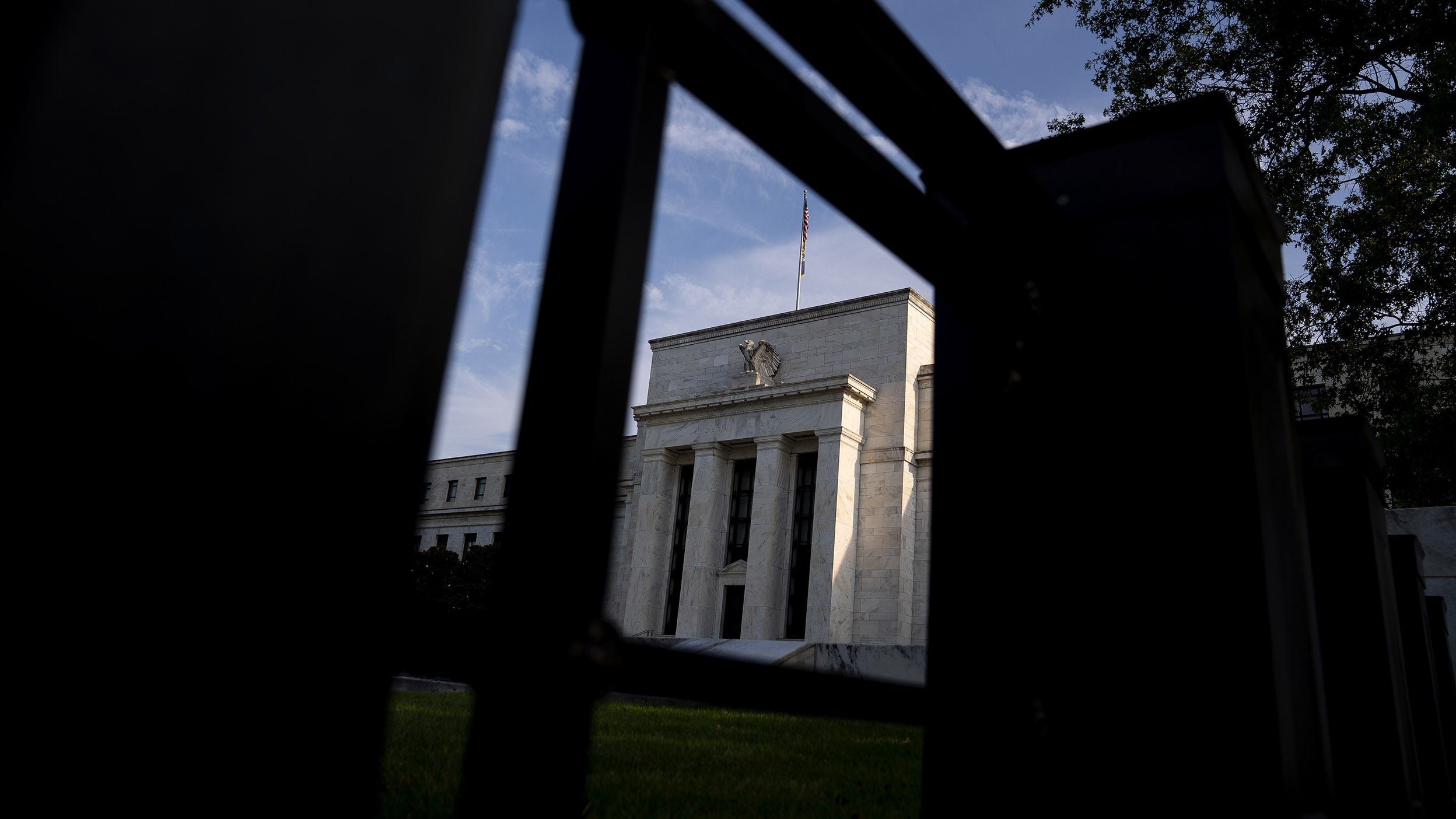
Markets and Economy Legal investigation of Fed Chair Powell presents new risk to markets
The potential use of the justice system against a sitting Federal Reserve Chair represents a line that markets have not previously had to price.

2025 was marked by uncertainty, yet markets and economies displayed a lot of resilience. As we look ahead to 2026, we believe the conditions are in place for stocks to potentially advance.
We believe lower interest rates in the US and greater government spending in Europe, Japan, and China should help lift the global economy out of a mid-cycle slowdown.
A pickup in global economic activity could unlock value across a wider range of areas, including non-US markets, smaller-cap stocks, and cyclical areas in the US.
2025 was a year marked by uncertainty, yet economies displayed a lot of resilience and markets delivered strong returns.1 As we look ahead to 2026, we believe the conditions are in place for global stocks to rise further. Our 2026 Annual Investment Outlook, Resilience and Rebalancing, reflects two key themes:
We enter 2026 with optimism, confident in the durability of businesses, encouraged by the direction of central banks and fiscal support, and mindful of the need for diversification as the market evolves.
2026 Investment Outlook Website Video
Speaker: [Brian Levitt, Chief Global Market Strategist]
0:07
The private sector demonstrated a remarkable ability to absorb economic shocks in 2025 and as we look to 2026, we believe the conditions are in place for the market's advance to continue.
0:20
That's especially given expectations for policy easing in the United States as well as fiscal support across Europe, Japan and China.
0:28
We believe such stimulus measures should help lift the global economy out of what's been a mid cycle slowdown.
0:35
What could this mean for investors?
0:37
A pickup in global activity could unlock value across a wider range of areas, including non-us markets, smaller capitalization stocks and cyclical sectors in the United States.
0:50
And that could contribute to more balanced market leadership.
0:53
We're entering 2026 with optimism, confident in the private sector's resiliency and encouraged by the direction of global monetary and fiscal policy.
1:03
And we're mindful of the need for diversification as the market narrative evolves.
1:08
Get the details in our 2026 Annual Investment Outlook, Resilience and Rebalancing.
Disclosures (on screen text only)
Important Information
The opinions expressed are those of the author, are based on current market conditions and are subject to change without notice. These opinions may differ from those of other Invesco investment professionals. These comments should not be construed as recommendations, but as an illustration of broader themes. Forward-looking statements are not guarantees of future results. They involve risks, uncertainties and assumptions; there can be no assurance that actual results will not differ materially from expectations.
All data as of October 31, 2025 unless otherwise stated. All data is USD, unless otherwise stated.
This video contains general information only and does not take into account individual objectives, taxation position or financial needs. Nor does this constitute a recommendation of the suitability of any investment strategy for a particular investor. Investors should consult a financial professional before making any investment decisions. Past performance is not indicative of future results. An investment cannot be made directly into an index.
Restrictions on Distribution
For Canadian audiences:
Commissions, trailing commissions, management fees and expenses may all be associated with mutual fund investments. Mutual funds are not guaranteed, their values change frequently, and past performance may not be repeated. Please read the simplified prospectus before investing. Copies are available from your advisor or from Invesco Canada Ltd. at www.invesco.com/ca.
Publication date: December 1, 2025
Invesco® and all associated trademarks are trademarks of Invesco Holding Company Limited, used under license.
For US audience
Not a Deposit; Not FDIC Insured; Not Guaranteed by the Bank; May Lose Value; Not Insured by any Federal Government Agency
Issued in the US by Invesco Distributors, Inc., 1331 Spring Street NW, Suite 2500, Atlanta, GA 30309.
©2025 Invesco Ltd.
All rights reserved.
All data provided by Invesco unless otherwise noted.
Invesco Advisers, Inc. provides investment advisory services to Individuals and Institutional Investors. Invesco Distributors, Inc. is the US distributor for Invesco’s retail products. Invesco Advisers, Inc., Invesco Canada Ltd. and Invesco Distributors, Inc. are all indirect, wholly owned subsidiaries of Invesco Ltd.
NA 4959171
Investors are questioning whether the artificial intelligence investment boom is becoming overdone, and whether we are in a bubble. At this stage, we think the artificial intelligence (AI) investment theme plays out further and think some of the parallels being drawn with previous bubbles don’t fully hold up. However, we favor rebalancing portfolios to navigate growing risks.
We believe there are AI opportunities that are more attractively priced, Chinese technology stocks, for example. The AI theme can play out along other angles. For example, companies that adopt AI may see cost efficiencies or new product offerings. Finally, strategies that broaden exposure beyond traditional market-cap-weighted approaches may be a prudent way to reduce the risk of overexposure to a few of the largest AI-driven stocks.
Eurozone growth has been disappointing for several years. However, we think that is changing now with Germany embarking on a period of higher military and infrastructure spending. We expect this to be supported across the region by higher military spending in many countries, continued growth in purchasing power, and recent interest rate cuts.
Pessimism toward the UK is too high in our view. We believe the Bank of England now has more scope to cut rates, and retail sales appear to be on an uptrend. Economic growth could surprise positively in 2026 and support UK markets.
Japan is experiencing a structural return of inflation that has helped ignite a virtuous cycle where consumption is climbing alongside nominal wages. The labor market remains tight, and capital investment has been consistently stronger than most economies.
We expect Japanese growth will continue to improve and move above trend in 2026, helped by meaningful fiscal stimulus. We expect the Bank of Japan to hike rates slowly, keeping rates well in accommodative territory, which should help support growth and investment.
India should see ongoing reforms and potential in 2026 alongside an improvement in US-India relations. That can help lift Indian stocks higher. We expect India to remain the world’s fastest-growing large economy, with growth modestly accelerating on Reserve Bank of India rate cuts. Domestic economic reforms remain crucial for future growth and resilience, in our view, and we expect gradual progress given political constraints.
Emerging market (EM) equities posted outsized returns in 20253, and we believe there are continued reasons for that outperformance to potentially continue in 2026.
We believe private credit remains an attractive option for those seeking diverse sources of income beyond traditional credit. Base rates remain above pre-pandemic levels,4 and an improved outlook for both the underlying real estate and cash flows of middle market borrowers should allow for private credit to perform well into 2026, in our view.
In addition, a more benign risk environment, better growth, and stable inflation, coupled with easier US monetary policy, are conditions that we believe should support private credit.
Get all the details on our macro and investment views, and which asset classes we favor most for the coming year.

The potential use of the justice system against a sitting Federal Reserve Chair represents a line that markets have not previously had to price.

A rise in Venezuelan oil production could pressure oil prices in a few years. In the meantime, we expect an accelerating global economy to boost demand for oil and support prices.

In 2025, clear storylines on the Federal Reserve, AI stocks, and rates captivated us. But the numbers don’t always match the narratives.
Important information
NA4989325
Image: Image: Alexander Spatari / Getty
The International Monetary Fund (IMF) is an international organization that promotes global monetary cooperation, financial stability, and international trade.
The price-to-earnings ratio is a valuation metric that compares a company's current share price to its earnings per share, and it indicates how much investors are willing to pay for each dollar of a company's earnings.
The Bloomberg Magnificent 7 Total Return Index is an equity benchmark that tracks the performance of a fixed basket of seven large-cap U.S. technology and growth stocks.
The MSCI Emerging Markets Index captures large and mid cap representation across 24 Emerging Markets (EM) countries.
The MSCI World All Cap Index captures large, mid, small and micro cap representation across 23 Developed Markets (DM) countries.
The MSCI World ex USA All Cap Index captures large, mid, small and micro cap representation across 22 of 23 Developed Markets (DM) countries (excluding the United States).
The S&P MidCap 400 is a benchmark index that tracks the performance of 400 midsized publicly traded companies in the United States.
The S&P 500 Index is a stock market index weighted by market capitalization that is made up of 500 of the largest public companies in the United States.
The S&P 500 Value Index measures constituents from the S&P 500 that are classified as value stocks based on three factors: the ratios of book value, earnings and sales to price.
All investing involves risk, including the risk of loss.
Past performance does not guarantee future results.
Investments cannot be made directly in an index.
AI technology companies are sensitive to specific risks such as small markets, business cycle changes, economic growth, technological progress, obsolescence, and regulation. These companies may have limited products, markets, resources, or personnel, making their securities more volatile, especially for smaller start-ups. Rapid technological changes can adversely affect their results. AI companies often rely on patents, copyrights, trademarks, and trade secrets to protect their technology, but there is no guarantee these protections will be sufficient. Significant R&D spending does not ensure product or service success.
This does not constitute a recommendation of any investment strategy or product for a particular investor. Investors should consult a financial professional before making any investment decisions.
Cash flow is the net amount of cash and cash equivalents generated by a business.
Investments in companies located or operating in Greater China are subject to the following risks: nationalization, expropriation, or confiscation of property, difficulty in obtaining and/or enforcing judgments, alteration or discontinuation of economic reforms, military conflicts, and China’s dependency on the economies of other Asian countries, many of which are developing countries.
Diversification does not guarantee a profit or eliminate the risk of loss.
Fiscal stimulus is government actions aimed at boosting economic activity, typically through increased spending or reduced taxes.
The risks of investing in securities of foreign issuers, including emerging market issuers, can include fluctuations in foreign currencies, political and economic instability, and foreign taxation issues.
Gross domestic product (GDP) is a broad indicator of a region’s economic activity, measuring the monetary value of all the finished goods and services produced in that region over a specified period of time.
Inflation is the rate at which the general price level for goods and services is increasing.
Investments in real estate-related instruments may be affected by economic, legal, or environmental factors that affect property values, rents, or occupancies of real estate. Real estate companies, including REITs or similar structures, tend to be small and mid-cap companies, and their shares may be more volatile and less liquid.
Private credit is debt financing provided by nonbank lenders, such as private equity firms and investment banks, to private companies, and is not traded on public markets.
Stocks of small- and mid-sized companies tend to be more vulnerable to adverse developments, may be more volatile, and may be illiquid or restricted as to resale.
In general, stock values fluctuate, sometimes widely, in response to activities specific to the company as well as general market, economic, and political conditions.
Many products and services offered in technology-related industries are subject to rapid obsolescence, which may lower the value of the issuers.
The opinions referenced above are those of the author as of December 1 ,2025. These comments should not be construed as recommendations, but as an illustration of broader themes. Forward-looking statements are not guarantees of future results. They involve risks, uncertainties, and assumptions; there can be no assurance that actual results will not differ materially from expectations.
This link takes you to a site not affiliated with Invesco. The site is for informational purposes only. Invesco does not guarantee nor take any responsibility for any of the content.